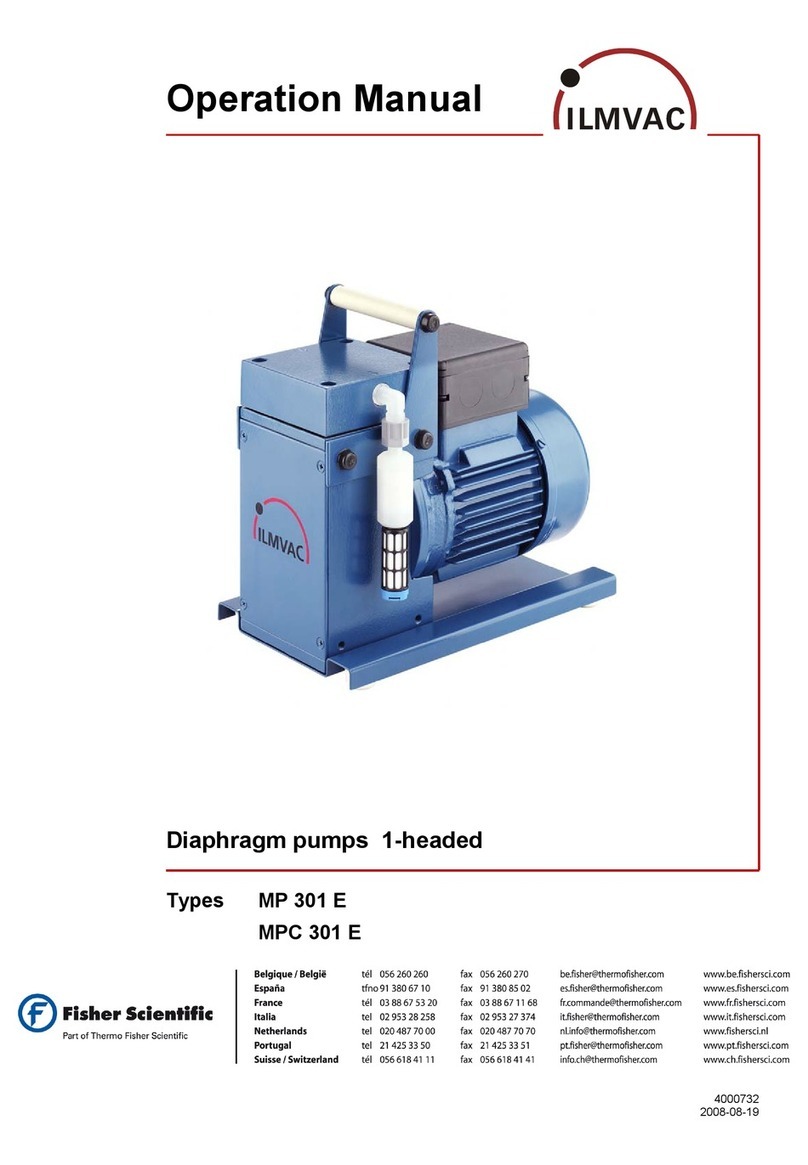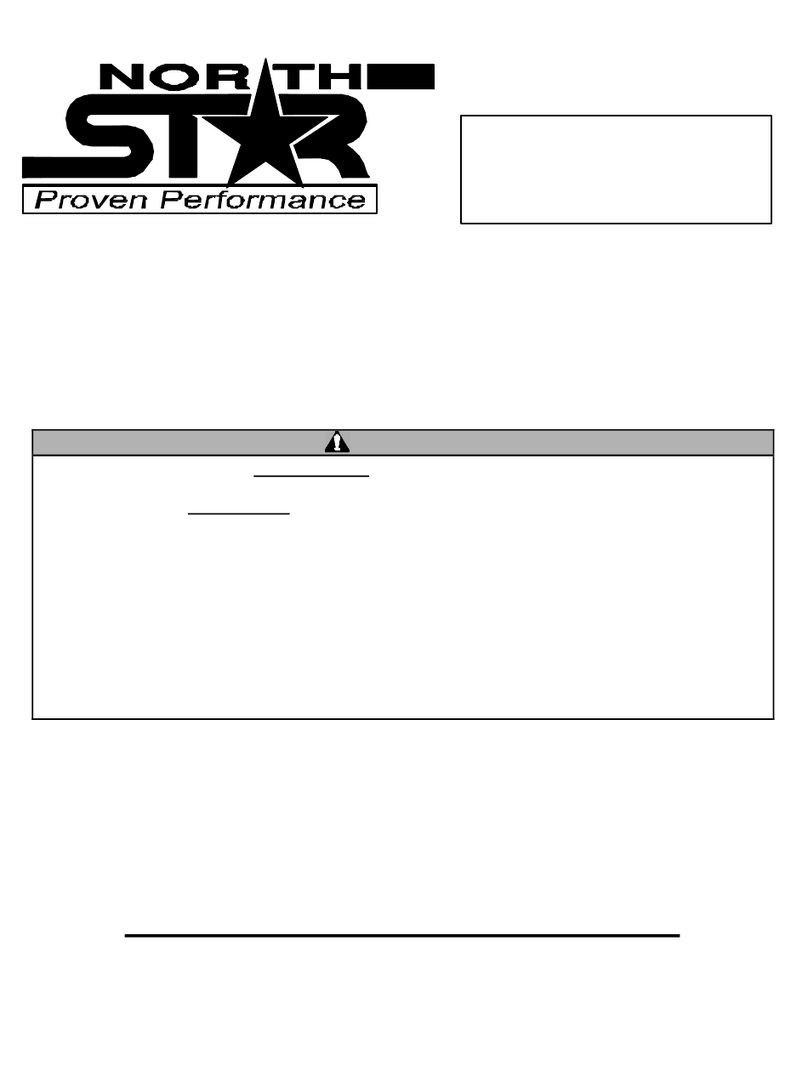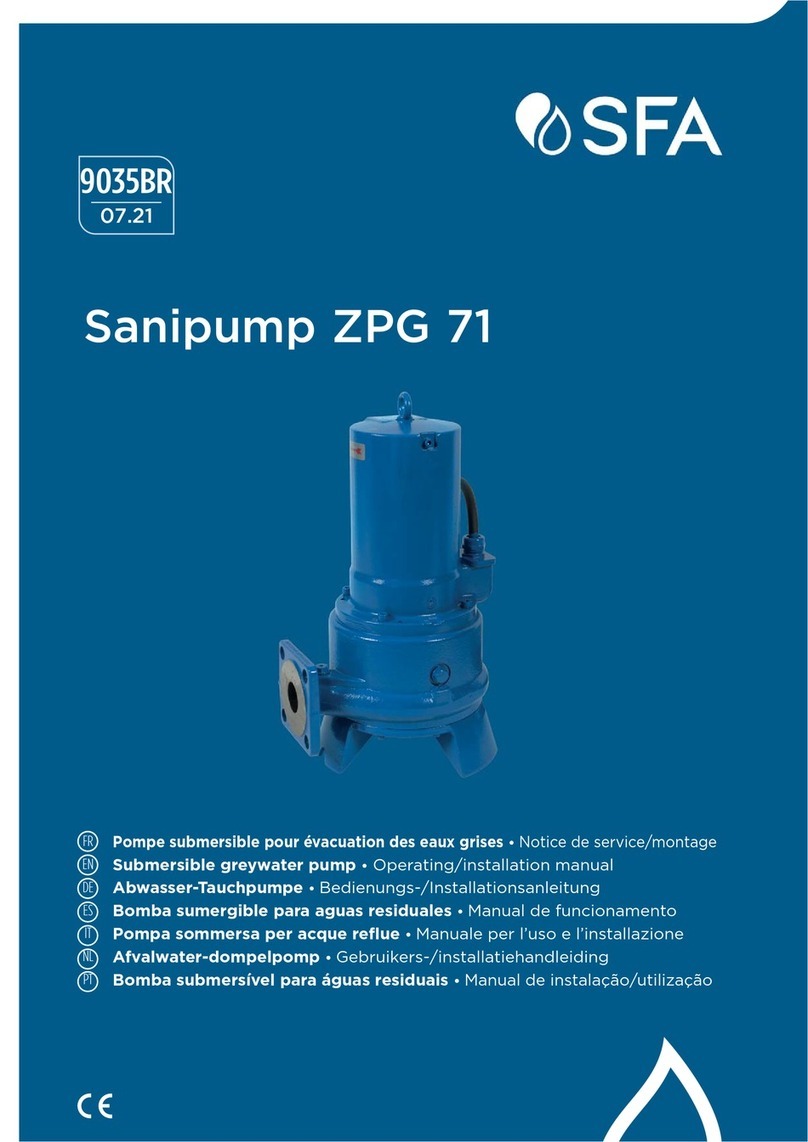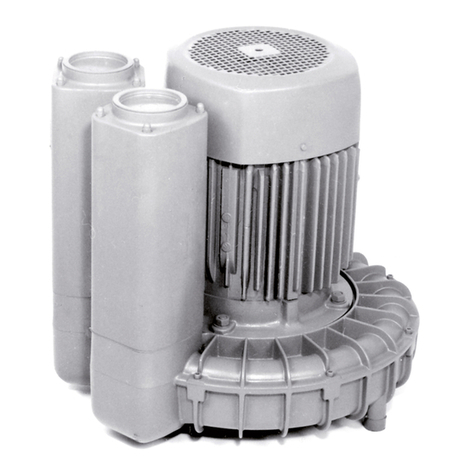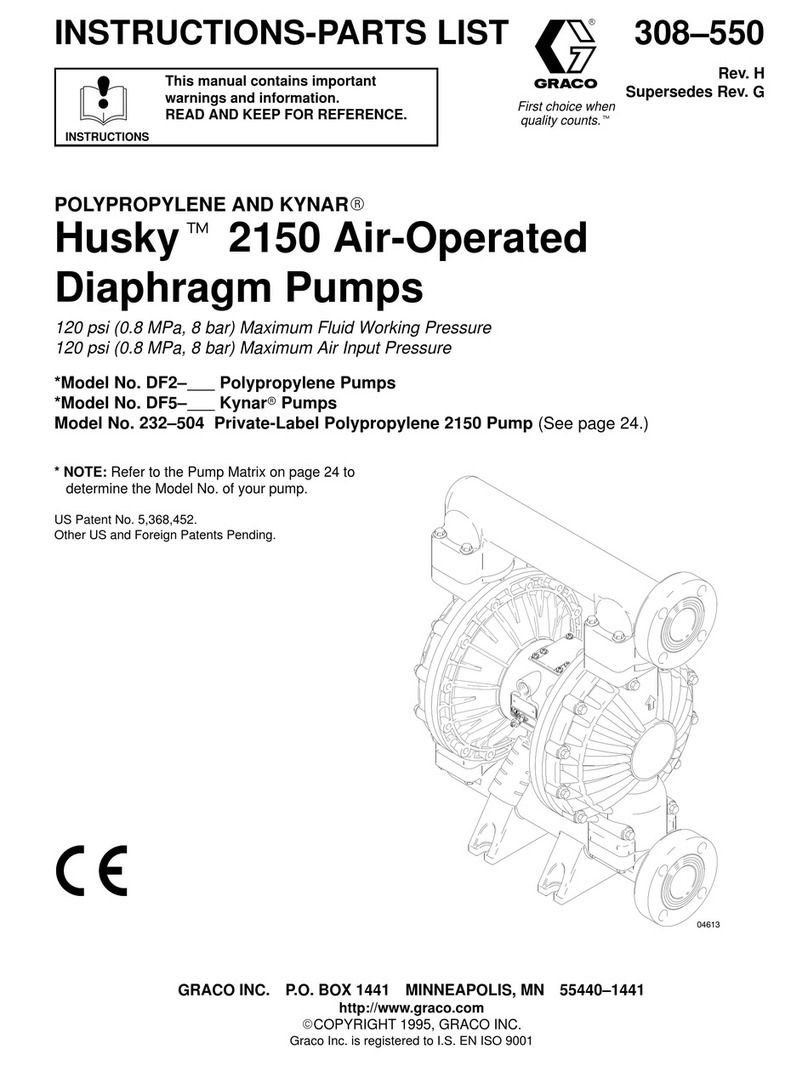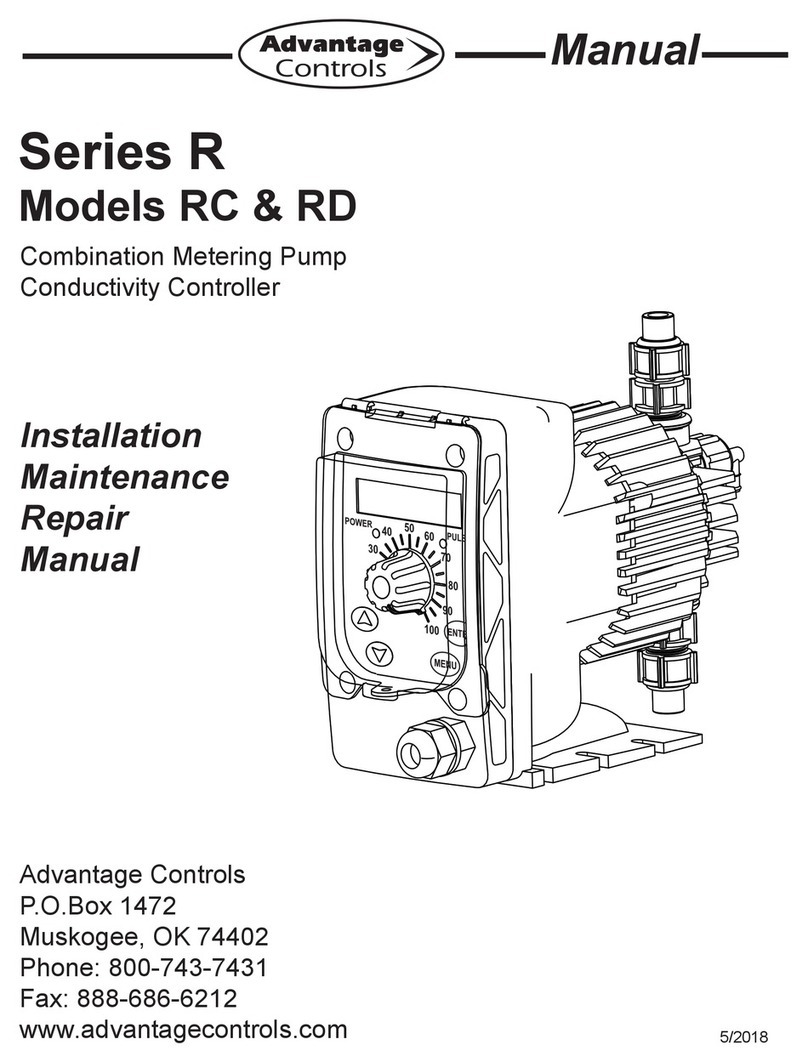Hi-Q PSU-2-H-D User manual

HI-Q Environmental
Products Co. 7386 Trade Street
San Diego, California 92121-2422
A
ir Sampling Equipment, Systems & Accessories Phone:(858) 549-2820
Fax:
Web:(858) 549-9657
www.HI-Q.net
PSU-2-H-D
(MOBILE, AIR SAMPLING PUMP SYSTEM)
Revised: 09/20/12 MAH

1
TABLE OF CONTENTS
General Specifications 2
Operational Specifications 2
Power Requirements 3
Set-up Assembly Instructions 3
Start-Up Procedure 10
Collection of Sample 11
Flow Meter and Flow Rate Adjustment 13
Operation of the Flow Control Valve 13
Calibration of the Flow Meter 14
Maintenance and Trouble Shooting
Pump , Elapsed Time Meter 18
Recommended Spare Parts 19
Appendices
A. Wiring Diagram
B. Complete PSU Assembly Diagram
C. Filter Box Detail Views
D. Motor/Pump Maintenance Manual
E. Flow meter Installation & Operation Instructions
F. Electronic Timer Manual
G. Calibration Certificate

2
GENERAL SPECIFICATIONS:
The PSU-2-H-D Mobile Pump with Control Valve System is designed for use as a constant flow
Air Sampler. It is normally used to pull air samples through various filters to collect dust
particulate, asbestos fiber particles or airborne pathogens for analysis. The PSU-2-H-D has a
digital flow meter calibrated with a user specified filter material. See the Calibration Certificate at
the back of this manual for calibration details.
The PSU-2-H-D is equipped with the PSU-RHLB weather resistant, lockable inlet which is
designed to hold the PSU-FH filter holder. The PSU-RHLB and PSU-FH combination have been
tested to have the highest particle capture efficiency. The PSU-RHLB sample inlet is adjustable
between 55 and 78 inches above the ground.
This PSU-2-H-D Mobile Air Sampling System has been custom designed to enclose and provide
“chain of custody” for the pump, flow controller, flow meter, filter holder and all electronics inside
two individual lockable, weather resistant enclosures. The system is designed around HI-Q's
standard MRV-0523CV, 1/4 HP mobile Cart air sampler which is depicted at www.HI-Q.net under
“continuous duty air samplers.”
OPERATIONAL SPECIFICATIONS:
The PSU-2-H-D utilizes a 1/4 Hp (0523 series) motor mounted, rotary carbon vane vacuum
pump. The carbon-graphite vanes are self lubricating. The pump runs at a constant speed and
can develop up to 26” Hg when used as a vacuum pump. The unregulated (open to flow), pump
capacity is 127 LPM. The pump has dual voltage capabilities of 115 and 230 VAC. This unit is
wired for 115 VAC. The pump is equipped with a thermotector and will automatically shut down
should the motor overheat.
Regulation of the air flow is achieved through HI-Q's, Mechanical Heavy Duty Automatic Control
Valve, model number MCV-260. This valve utilizes the opposing spring/diaphragm principle.
Once the flow is set by increasing or decreasing the master spring tension (wing nut), the flow will
remain constant up to the pump capacity.
The PSU-2-H-D features an integral venturi flow meter that has been calibrated at the factory with
a NIST traceable secondary master flow element. The “-D” on the end of the part number
signifies that this unit features digital flow measurement by incorporating a dual input digital panel
meter and two differential pressure sensors. Sensor A measures the differential pressure across
the venturi and sensor B measures the pressure difference between atmospheric and the inlet of
the venturi in order to compensate for filter loading. The digital panel meter has a linearization
table for each sensor. Input A relates differential pressure to flow and may have up to 15
linearization points, resulting in higher accuracy than a typical two point calibration of a
mechanical flow meter. Input B is used to compensate for increased pressure drop as the filter
media loads up. The digital panel meter displays the instantaneous flow rate, the maximum flow
rate and the total flow volume. The maximum and total flows are user resetable.

3
The digital panel meter can be equipped with optional plug in cards that allow DeviceNet,
RS-232, RS-485 communications as well as analog signal output and relay outputs for alarms.
The PSU-2-H-D has a digital elapsed timer that is wired to run when the pump is running. If the
pump stops for any reason, the timer will also stop.
POWER REQUIREMENTS
This unit is wired for operation on a 115 VAC GROUNDED circuit. It is highly recommended that
a ground fault circuit be used to prevent electrical shock hazards. If a ground fault circuit is not
available, a weather resistant shock prevention unit: GFCI-2 can be supplied by HI-Q.
INPUT POWER:
Voltage: 115 V~, 50/60 Hz
Current: 4.5 A
Power: 190 W
Explanation of Electrical Symbols:
V~: Volts Alternating Current (VAC) W: Watts
Hz: Hertz : Protective Earth Ground
A: Amps : Shock Hazard
FUSES:
The pump is protected by a 10 AMP Buss slo-blo fuse installed in the control cabinet.
Replacement fuses should be of the type: 10 A, T, 250V.
The panel meter is protected by a 2 AMP Buss slo-blo fuse installed in the control cabinet.
Replacement fuses should be of the type: 2 A, T, 250V.

4
SET-UP ASSEMBLY INSTRUCTIONS
The PSU-2-H-D is completely assembled with the exception of the PSU-RHLB inlet/upper
gooseneck assembly and security cable. Proceed as follows:
1. Remove plastic dust cover from the gooseneck/filter box & intake tube assembly
located on the side of the mobile box.

5
2. Connect the two components by inserting and screwing down the Union Coupling on
the bottom of the blue painted upper inlet tube to hand tight. Do not use a wrench!
There is a rubber gasket seal on the coupling which will make the coupling air tight.

6
3. Remove the knurled aluminum nut (Goosenut) and the tapered black polyurethane
Poly-Pack seal from the top of the inlet tube and slide on to the bottom of the 5/8”
diameter tube on the bottom of the PSU-RHLB inlet as shown below. Make sure that
the o-ring imbedded in the top of the Poly-Pack seal is on top.
4. Slide the 5/8” diameter stainless tube down inside the inlet tube and tighten the
Goosenut.

7
5. Remove PSU-RHLB Inlet (upper portion of the inlet) by holding the PSU-RHLB Handle
in one hand and rotating the PSU-RHLB Inlet counter clockwise.
6. Remove the PSU-FH filter holder from the base of the PSU-RHLB by pivoting the two
filter holder locks out of the way.

8
7. Open the PSU-FH by twisting the upper knurled silver piece counter clockwise 120°
while holding the lower dark grey piece steady.
8. Place the 47mm diameter filter media in the shallow counterbore above the honeycomb
filter support and center on the o-ring seal.

9
9. Reassemble the PSU-FH filter holder and place on the PSU-RHLB inlet base. Ensure
that the two filter holder locks are rotated clockwise until the hooks are in the locking
groove on the bottom of the PSU-FH filter holder.
10. Replace the upper portion of the PSU-RHLB, thereby enclosing the PSU-FH filter
holder by slipping over the top of the filter holder, aligning the slots with the pins on the
base and rotating 90° clockwise until the locking holes line up. The inlet may be locked
with a standard padlock (not provided).

10
11. Set the sample air intake level by loosening the knurled aluminum nut from the
threaded black nylon gooseneck screw (Goosescrew) and raising or lowering the inlet
so that the intake bug screen is at desired height above the ground. Before securing
the sampling set height, make sure that the tapered black polyurethane Poly-Pack seal
is seated snugly in the lower black nylon threaded screw (Goosescrew).
12. Place the security cable around the intake tube between the stand-offs, then to the
locking hasp. It will be looped through the lock. (Lock not provided.) The security cable
prevents vandals from removing the gooseneck/filter housing. Make sure that the
cable prevents the entire assembly from being lifted up and out of the PSU-2-H-D
handle.

11
13. A “U”-Bolt is installed on the side of the unit, to allow a cable or chain to be used to
secure the unit to a telephone pole or other permanent post.

12
START-UP PROCEDURE
After assembly of the gooseneck to the pump system, make sure the intake bug screen inlet is at
the correct height. (Standard breathing level protocol is 59” from the ground). If the filter holder
and collection media is already in place skip the first step of the following procedures.
1. Remove PSU-RHLB Inlet (upper portion of the inlet) by holding the PSU-RHLB Handle
in one hand and rotating the PSU-RHLB Inlet counter clockwise. Check to ensure that
a PSU-FH filter holder is installed. Check to ensure that a filter is installed in the
PSU-FH. Replace the PSU-RHLB Inlet. See drawing “PSU-RHLB & FH ASSY”.
2. Open the lid on the PSU. Turn on the flow display using the toggle switch indicated
below. Turn on pump system using the indicated toggle switch.

13
3. Adjust the flow rate to the flow rate designated by the laboratory protocol by using the
flow control knob on the flow control valve.
4. Press the Red timer reset button to set the timer to zero. The timer reads in hours and
tenths of hours. One tenth of an hour is 6 minutes.
COLLECTION OF SAMPLE AFTER DESIGNATED RUN TIME
The laboratory will establish the specific filter replacement procedure, run time and other details
for this sampling sequence. Standard procedures basically call for the cabinet to be opened and:
1. Record the flow rate at the end of the sampling time.
2. Turn off the pump.
3. Record the elapsed time in hours and tenths.

14
4. Open the PSU-RHLB inlet. Place the transport cap on the PSU-FH. Remove the
PSU-FH filter holder assembly from the PSU-RHLB inlet. Place the un-opened filter
assembly into an airtight container plastic bag/container.
5. Mark the container with the location data, elapsed time, date, starting flow rate and end
of sampling time flow rate. (This data will give you the average flow rate.)
6. Send the sealed sample to the laboratory for analysis.
7. Replace the filter with a pre-loaded filter assembly (per the instruction above).
8. Reset the timer to zero.
9. Restart the pump.
10. Adjust the flow rate, close cover and secure.

15
FLOW METER AND FLOW RATE ADJUSTMENT:
The instantaneous air flow rate can be read directly from digital panel meter located on the
control panel on the inside of the enclosure lid. The panel meter reads the input from a pair of
differential pressure sensors attached to a venturi tube to establish the air flow rate. The principle
is that air flowing through an orifice will create a pressure differential. This differential pressure is
proportional to the flow rate. The second differential pressure sensor is used to determine the
pressure drop from atmospheric to the inlet of the venturi and allows the panel meter to
compensate for dust loading on the filter.
The venturi/ flow meter is calibrated at the factory with an NIST (National Institute of Standards
and Technology) traceable secondary flow element.
OPERATION OF THE FLOW CONTROL VALVE
The intake air flow rate is increased or decreased by turning the flow control knob that
compresses the spring on the flow controller. Turn the knob clockwise to decrease the flow rate,
and counter clockwise to increase the flow rate. The flow rate should be adjusted with the filter
holder and filter element (paper) in place. The flow rate will need to be readjusted every time
the pump is turned off and on due to slight hysteresis in the spring and diaphragm of the flow
control valve.

16
CALIBRATION OF THE FLOW METER UNIT
This unit is calibrated at the factory, and is ready to use. It is however recommended that a field
test calibration unit be used periodically to confirm the accuracy of the flow meter reading. These
calibration units must be re-certified by the factory every year to conform to the air sampling
protocol. HI-Q’s standard Re-certification takes approximately 2 weeks (this includes expedited
shipping to and from our factory).
CALIBRATION
The PSU-2-H-D is calibrated at the factory. The following procedure is for verifying the flow rate
or re-calibration.
Equipment Required:
In-Line Calibration Adapter:
Model PSU-FH-CALADAPT: Calibration adapter for PSU-FH filter holder. Adapter slips
onto top of PSU-FH filter holder and seals against the filter holder’s o-ring. Adapter has ½”
Swagelok male quick disconnect fitting on inlet.
Air Flow Calibrator: Suggested flow calibration units with custom ½” stainless steel quick
disconnect fittings (can be viewed and purchased on-line at www.HI-Q.net):
Model AFC-110L-5QD: Analog Air Flow Calibrator (no power requirements, operates by
pressure differential created by moving air). Unit includes a 7 foot flexible hose with ½”
stainless steel female quick disconnect coupling on downstream connection for connection
to the PSU-FH-CALADAPT.
Model AFC-DIG-110L-5QD:Digital Air Flow Calibrator (115 VAC line power required.
Unit measures flow by sensing pressure differential created by moving air). Unit includes a
7 foot flexible hose with ½” stainless steel female quick disconnect coupling on
downstream connection for connection to the PSU- FH-CALADAPT.
Model D-AFC-110L-5QD:“All In One” Digital battery powered Air Flow Calibrator. Unit
features graphical LCD display, data logging and a variety of optional electronic outputs.
The unit measures flow by sensing pressure differential created by moving air. Unit
measures Temperature, Barometric pressure, and is able to indicate flow in Metric or
English units with either Standard or Actual (Apparent) corrections factors. Unit includes a
7 foot flexible hose with ½” stainless steel female quick disconnect coupling on
downstream connection for connection to the PSU- FH-CALADAPT.
HI-Q air flow calibrators are venturi flow meters. Venturi flow meters produce a low pressure drop
(ΔP). Note that some other air flow calibrators produce a larger ΔP and their use for calibration
could result in poor calibration accuracy.

17
Re-Calibration Procedure
The PSU-2-H-D uses a differential pressure sensors to sense the ΔP across the flow venturi and
the ΔP across the filter media and sample train. This sensors outputs a 0-5 VDC signal to the
PAXDP display. The PAXDP can incorporate up to input scaling 16-points to compensate for the
non-linear input signal of the sensors. The PAXDP has two input tables, “INP A” and “INP b”. The
flow sensor is connected to “INP A”. The filter loading compensation table is connected to “INP b”
and does not need to be adjusted by the user. At each of the data points, an Input Value (INP #)
corresponds to a programmed Display Value (DSP #). Calibration consists of setting the unit at a
known flow and then adjusting the appropriate Input Value so that the PAXDP displays the
correct flow rate. The values programmed in at the factory are shown on the “PARAMETER
VALUE CHART” in the calibration documents contained in Appendix G. Each unit will have its
own unique set of input values. Before attempting to calibrate this unit, read the “MODEL PAXDP
– 1/8 DIN DUAL INPUT PROCESS INPUT PANEL METER” description in Appendix E.
1. Remove the PSU-RHLB Inlet.
2. Put new filter media into the PSU-FH filter holder and install on the PSU-RHLB base. It is
essential that one recalibrate the PSU-2-H-D Series with the same filter media as that
which will be used for sampling in the field. Varying the maximum pressure drop (caused
by the filter paper) at calibration will affect the overall accuracy of the calibration.
3. Place the PSU-FH-CALADAPT on top of the PSU-FH and push down to seat the o-ring
seal.

18
4. Rotate the locking wings of the PSU-FH-CALADAPT clockwise (when viewed from above)
until the slots on the wings engage the 3/8” dowel pins on the PSU-RHLB receptacle.

19
5. Connect ½ inch female quick disconnect on flexible hose provided with the airflow
calibrator to the ½ inch male quick disconnect on the inlet of the PSU-FH-CALADAPT.
6. Turn on the pump and adjust the sample flow to the maximum flow or to the anticipated
sample flow rate.
7. Connect airflow calibrator to the ½ inch male quick disconnect on the inlet of the filter
holder.
8. Push the “PAR” button on the PAXDP digital display. The display will alternate between
“INP A” and a number. This number represents the flow rate before it is compensated for
filter pressure drop.
This manual suits for next models
1
Table of contents
Popular Water Pump manuals by other brands
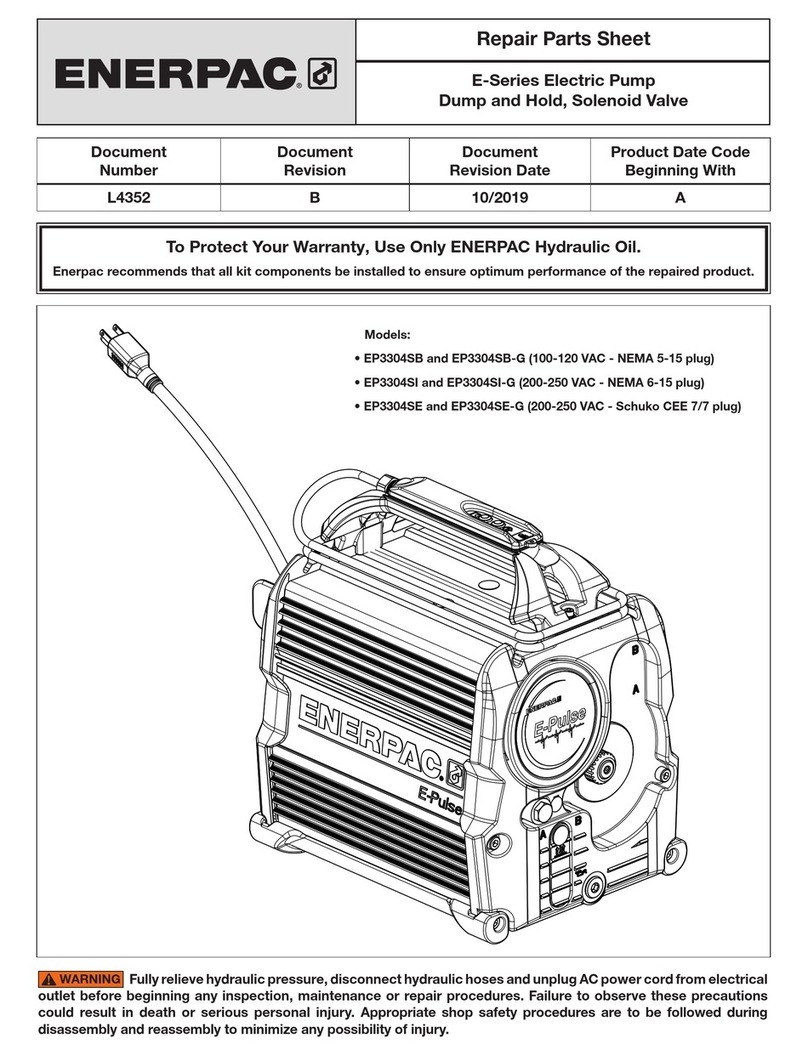
Enerpac
Enerpac E Series Repair Parts Sheet

BUSCH
BUSCH R5 Oxygen instruction manual
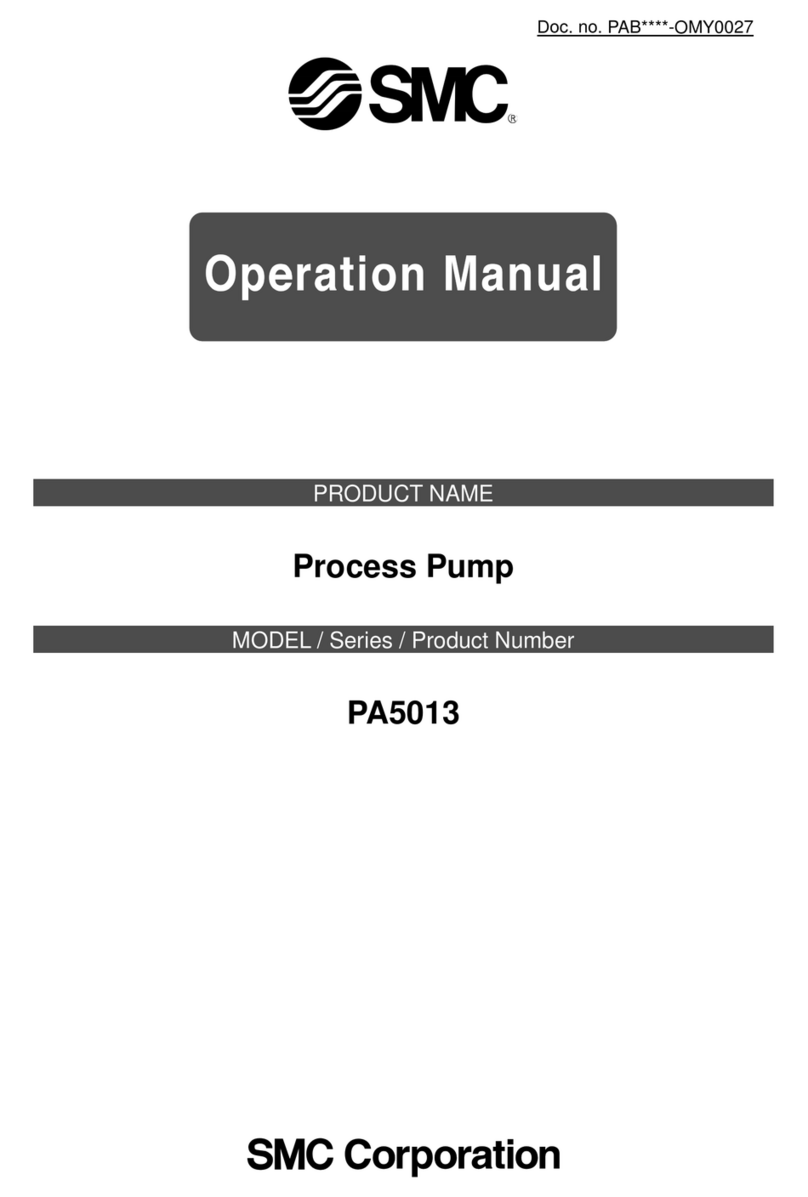
SMC Networks
SMC Networks PA5013 Operation manual
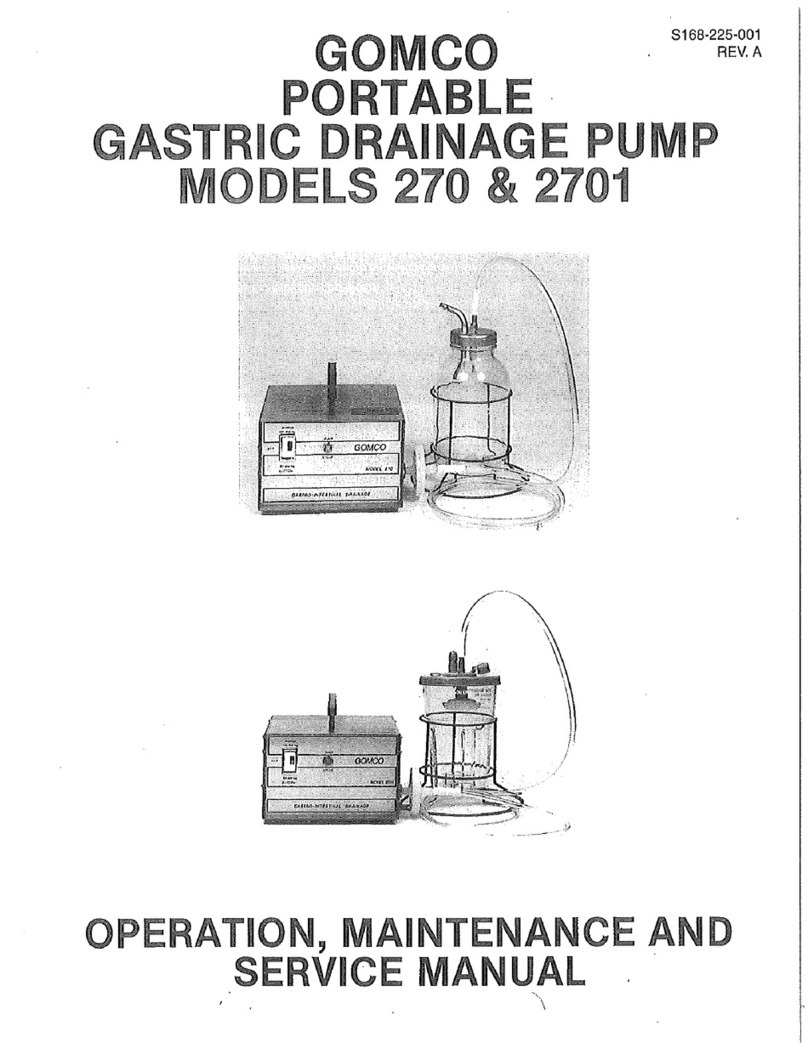
Gomco
Gomco 270 Operation, maintenance and service manual
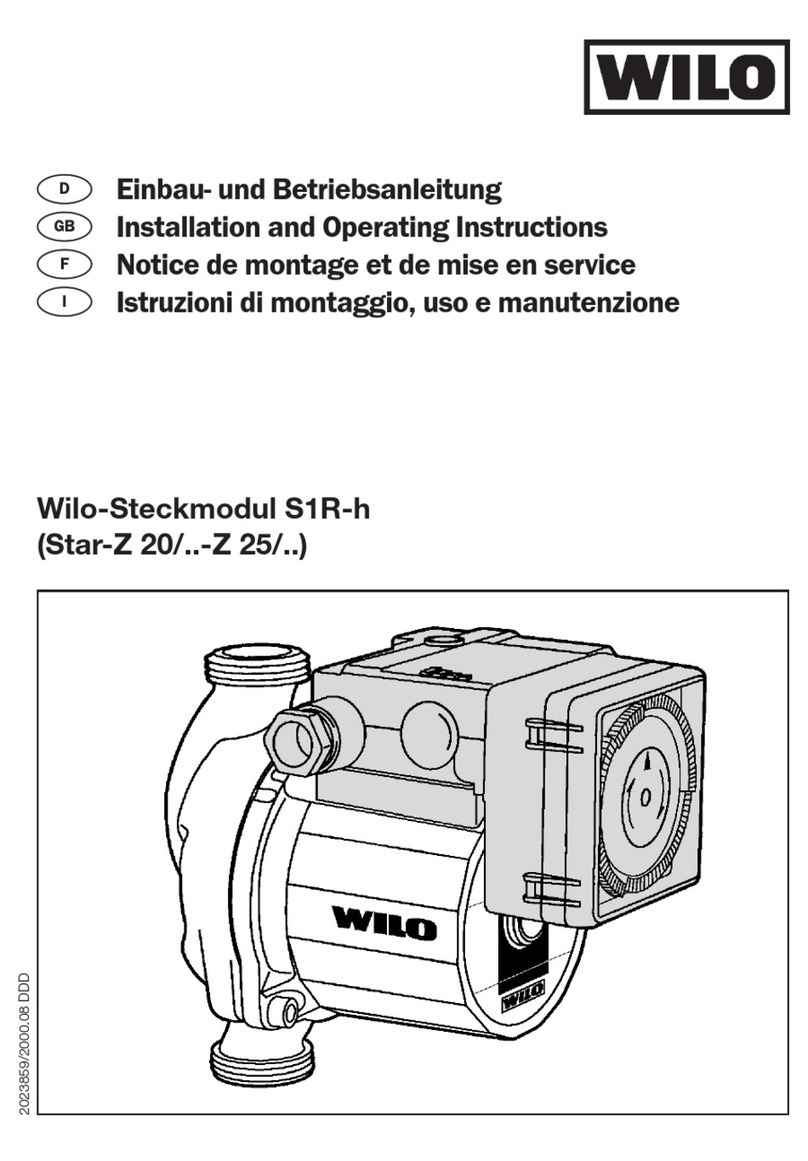
Wilo
Wilo Wilo-Steckmodul S1R-h Star-Z 20 Series Installation and operating instructions
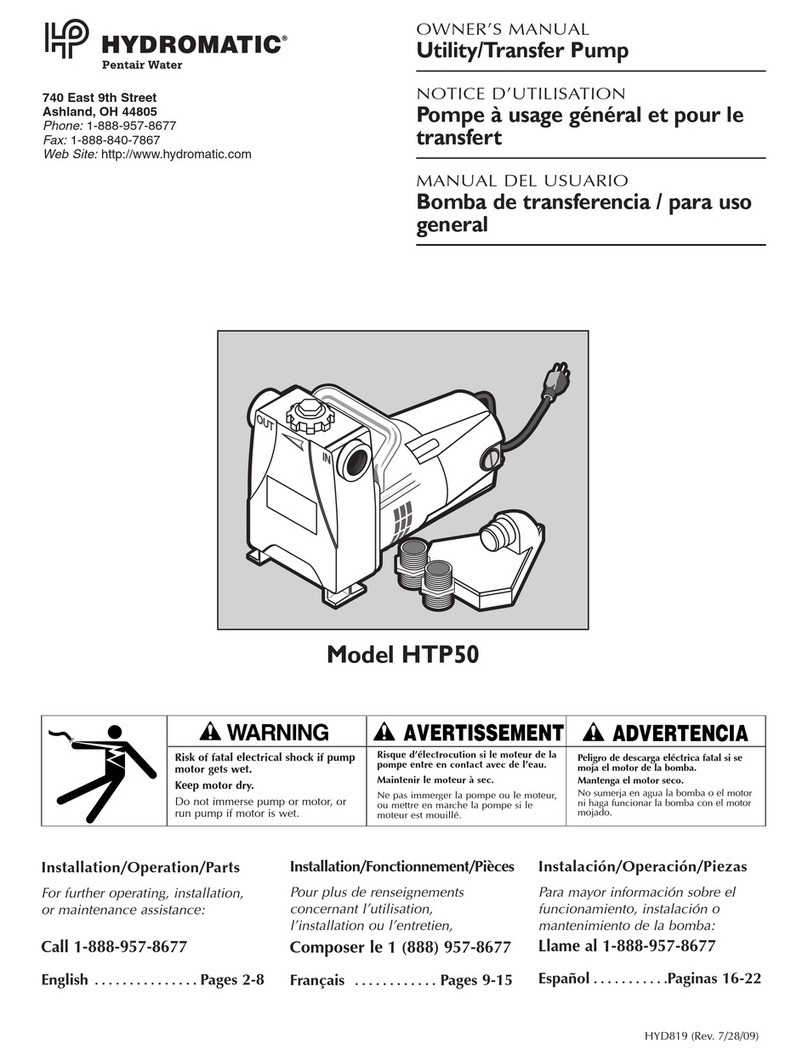
Pentair Hydromatic
Pentair Hydromatic HTP50 owner's manual

